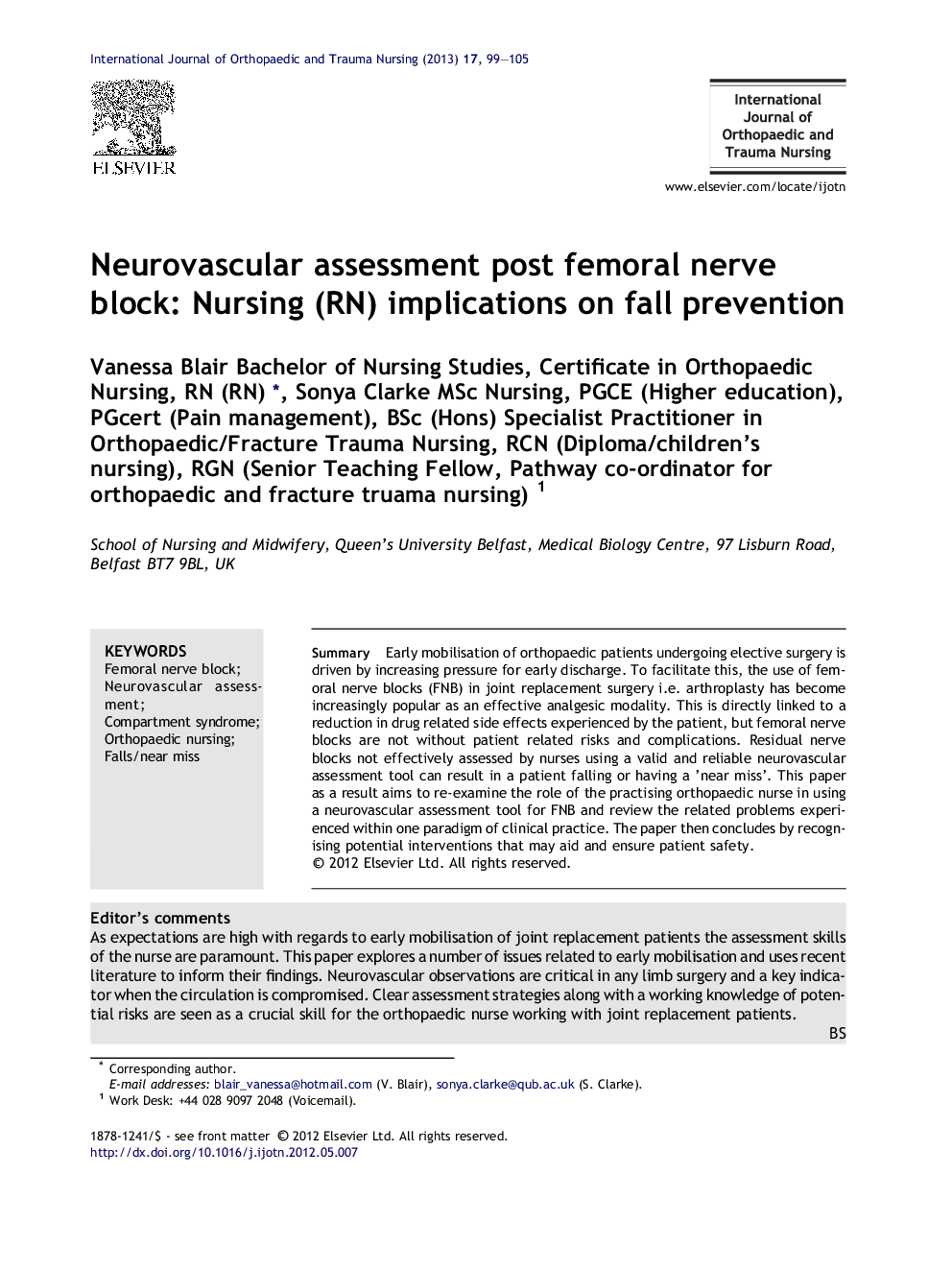| کد مقاله | کد نشریه | سال انتشار | مقاله انگلیسی | نسخه تمام متن |
|---|---|---|---|---|
| 2653412 | 1563993 | 2013 | 7 صفحه PDF | دانلود رایگان |
SummaryEarly mobilisation of orthopaedic patients undergoing elective surgery is driven by increasing pressure for early discharge. To facilitate this, the use of femoral nerve blocks (FNB) in joint replacement surgery i.e. arthroplasty has become increasingly popular as an effective analgesic modality. This is directly linked to a reduction in drug related side effects experienced by the patient, but femoral nerve blocks are not without patient related risks and complications. Residual nerve blocks not effectively assessed by nurses using a valid and reliable neurovascular assessment tool can result in a patient falling or having a ’near miss’. This paper as a result aims to re-examine the role of the practising orthopaedic nurse in using a neurovascular assessment tool for FNB and review the related problems experienced within one paradigm of clinical practice. The paper then concludes by recognising potential interventions that may aid and ensure patient safety.
Journal: International Journal of Orthopaedic and Trauma Nursing - Volume 17, Issue 2, May 2013, Pages 99–105
